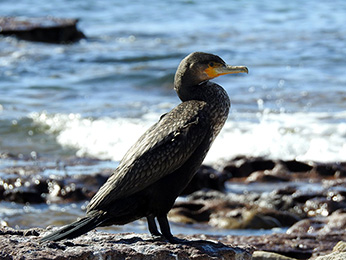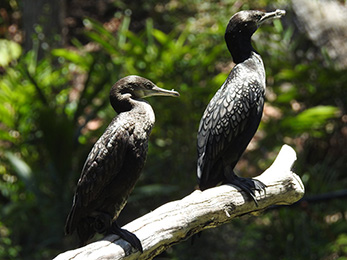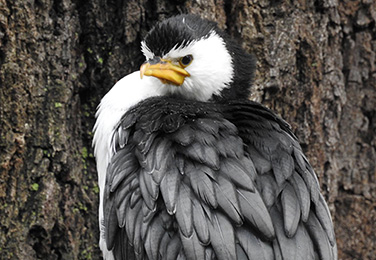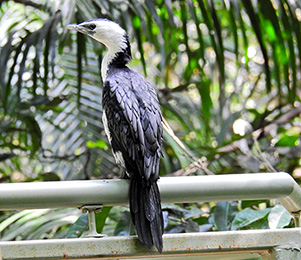CORMORANTS
Cormorants are a fascinating group of waterbirds that grace Australia’s diverse aquatic environments. These sleek birds are often spotted standing with their wings outstretched, a pose that’s as iconic as it is practical – they’re drying their feathers, as cormorants lack the waterproofing oil that many other waterbirds have.
One of the most remarkable features of cormorants is their exceptional diving ability. They are known to plunge into the water with grace, propelling themselves with powerful webbed feet to pursue their underwater prey. Unlike ducks and swans that float on the surface, cormorants can dive deep, sometimes up to several meters, to snatch fish with their sharp, hooked beaks.
Cormorants have a cosmopolitan distribution, which means they can be found all around Australia, from the tropical north to the temperate south, inhabiting both salt and freshwater environments. They’re as comfortable in the secluded corners of inland rivers and lakes as they are along the rugged, salty coastline.
Another interesting tidbit about these birds is their social nature. Cormorants are often observed roosting and hunting in groups. This social behavior extends to their nesting habits, where they build their nests close to one another, often in colonies alongside other waterbirds. These nests are usually constructed from sticks and are situated in trees, on cliffs, or even on the ground on offshore islets.
Their adaptability to various habitats and climates is a testament to the cormorant’s resilience. However, this doesn’t mean they are free from threats. Like many wildlife species, they face challenges from habitat destruction, pollution, and entanglement in fishing gear. Thus, while they are a common sight in Australia’s waterways, their continued presence is a reminder of the delicate balance within our natural ecosystems.
Cormorants in Australia are a true spectacle of nature’s adaptability and grace. Their diving prowess, social colonies, and widespread presence across the continent make them a prominent feature in the tapestry of Australian wildlife. Through understanding and appreciating these birds, we are reminded of the importance of conserving the natural habitats that sustain them.




